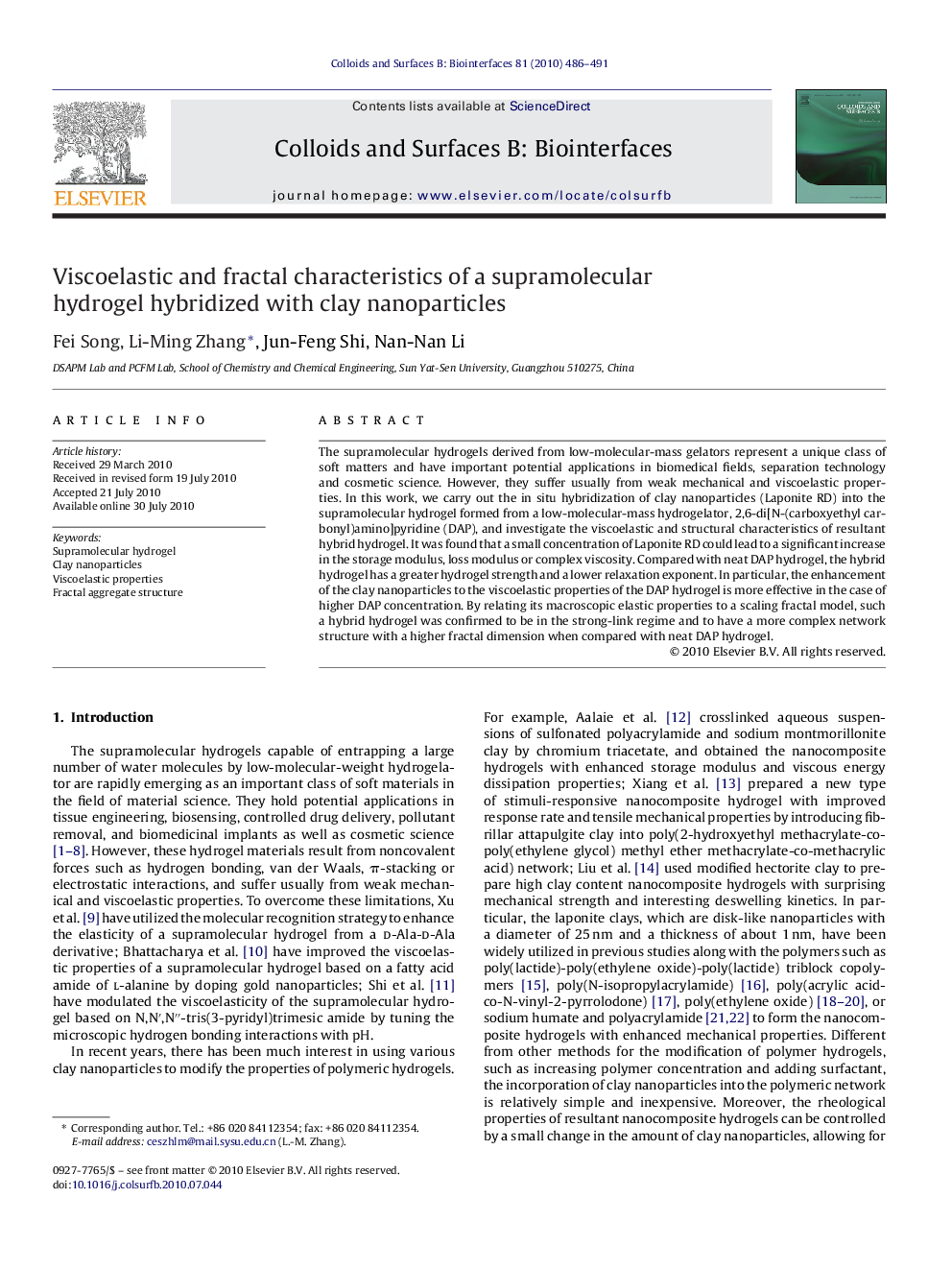| Article ID | Journal | Published Year | Pages | File Type |
|---|---|---|---|---|
| 601419 | Colloids and Surfaces B: Biointerfaces | 2010 | 6 Pages |
The supramolecular hydrogels derived from low-molecular-mass gelators represent a unique class of soft matters and have important potential applications in biomedical fields, separation technology and cosmetic science. However, they suffer usually from weak mechanical and viscoelastic properties. In this work, we carry out the in situ hybridization of clay nanoparticles (Laponite RD) into the supramolecular hydrogel formed from a low-molecular-mass hydrogelator, 2,6-di[N-(carboxyethyl carbonyl)amino]pyridine (DAP), and investigate the viscoelastic and structural characteristics of resultant hybrid hydrogel. It was found that a small concentration of Laponite RD could lead to a significant increase in the storage modulus, loss modulus or complex viscosity. Compared with neat DAP hydrogel, the hybrid hydrogel has a greater hydrogel strength and a lower relaxation exponent. In particular, the enhancement of the clay nanoparticles to the viscoelastic properties of the DAP hydrogel is more effective in the case of higher DAP concentration. By relating its macroscopic elastic properties to a scaling fractal model, such a hybrid hydrogel was confirmed to be in the strong-link regime and to have a more complex network structure with a higher fractal dimension when compared with neat DAP hydrogel.
